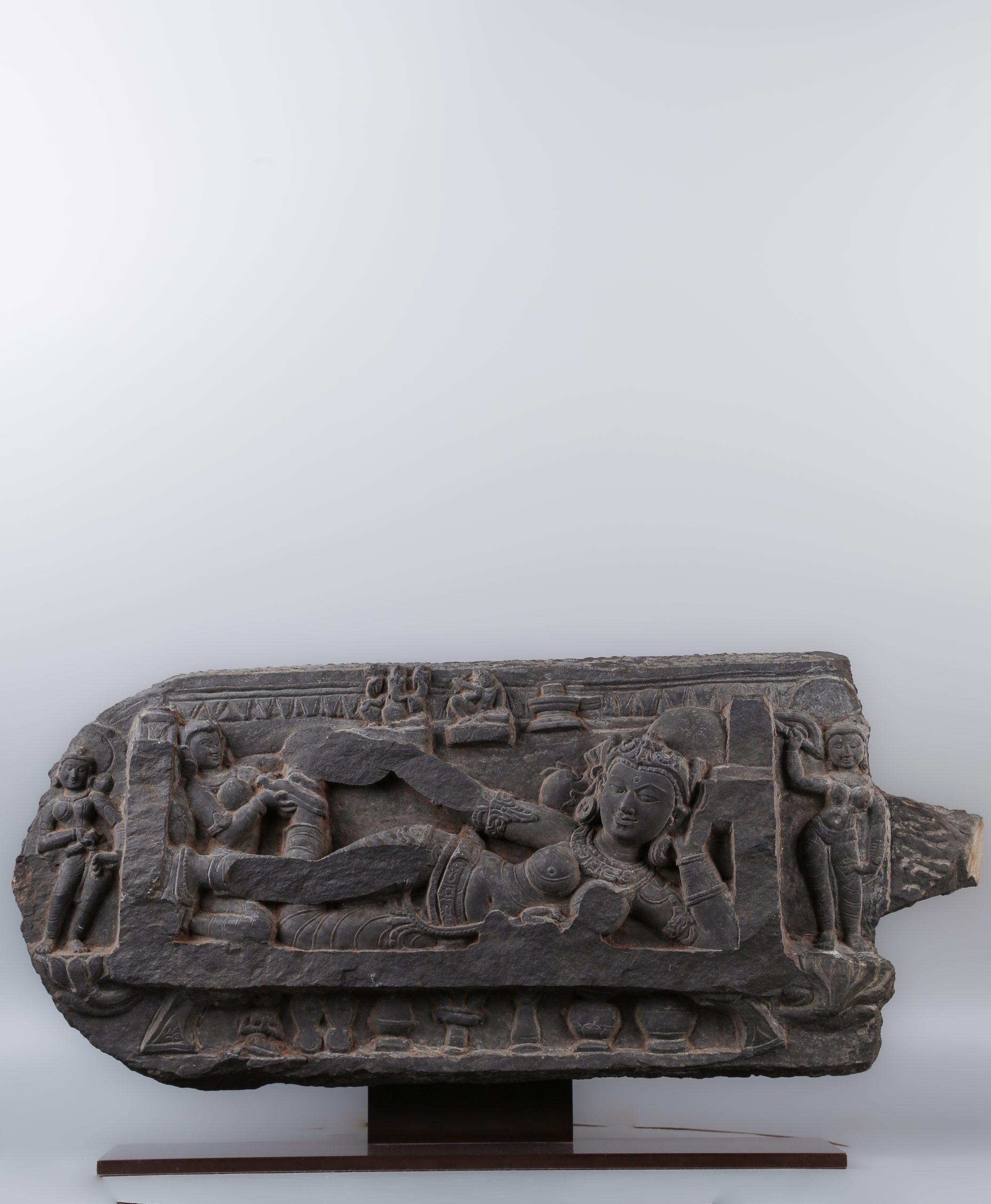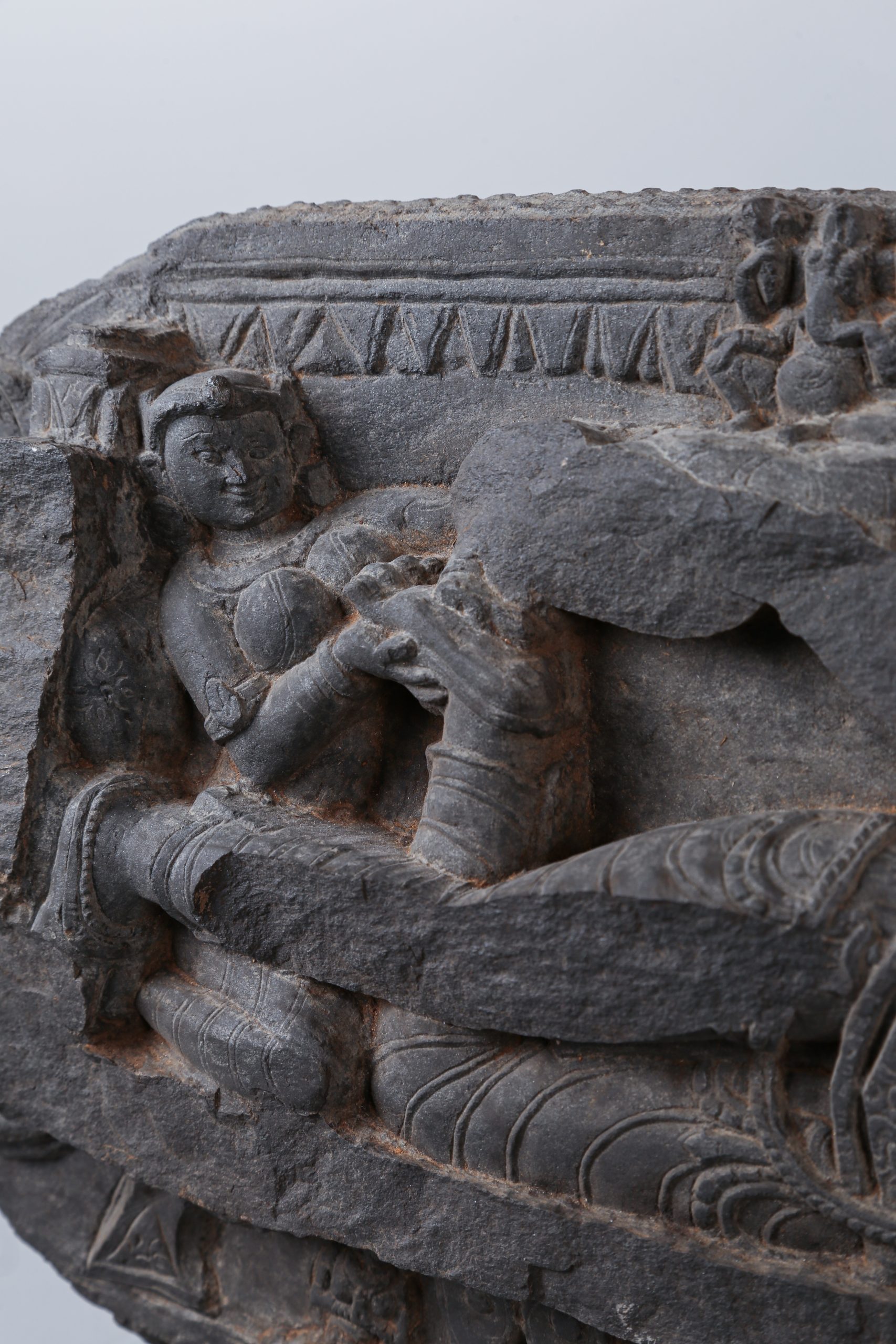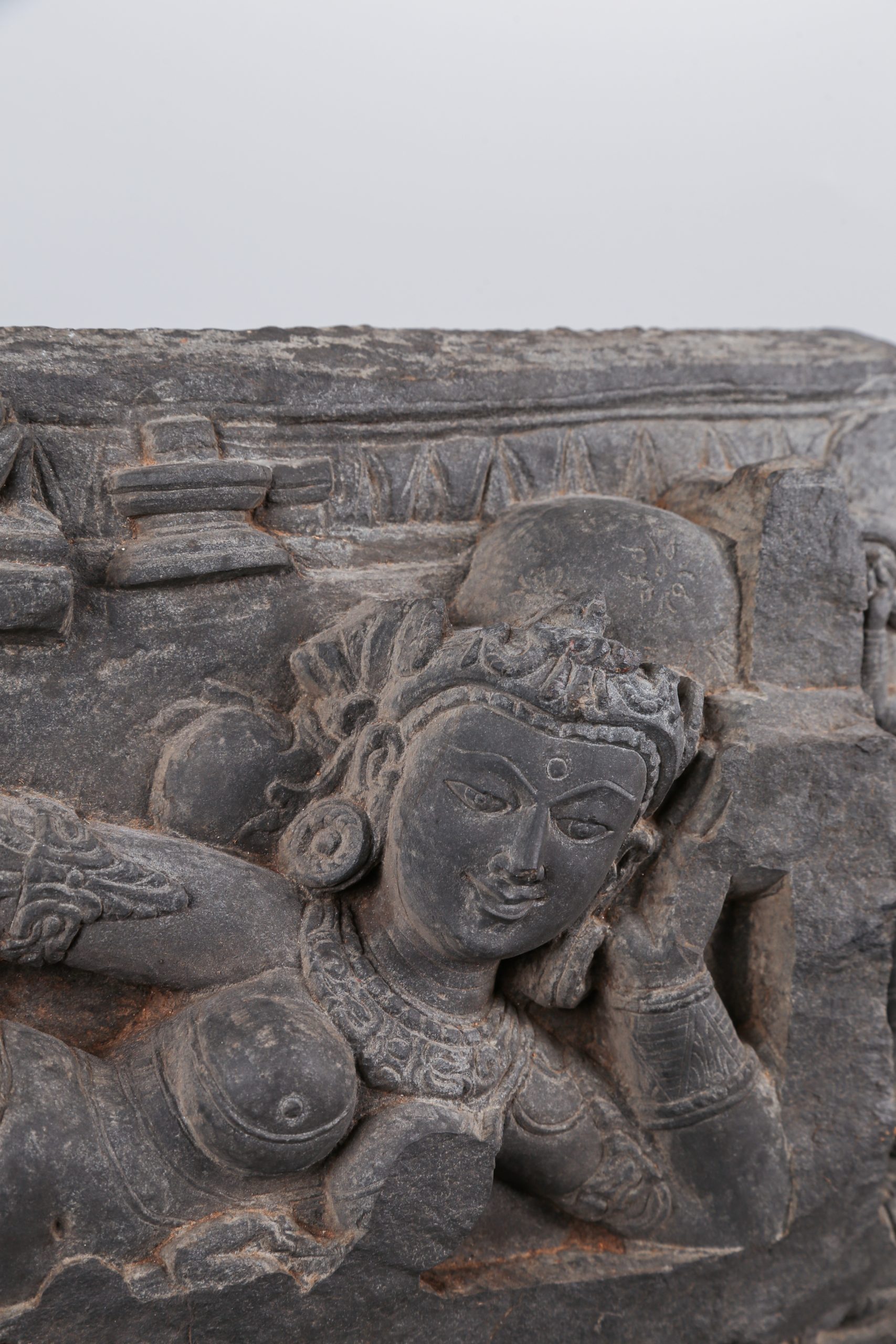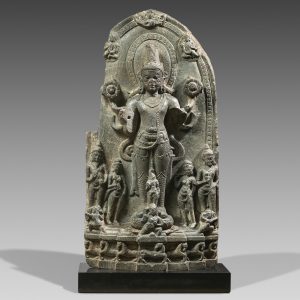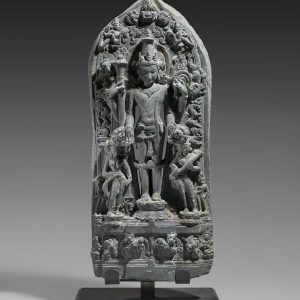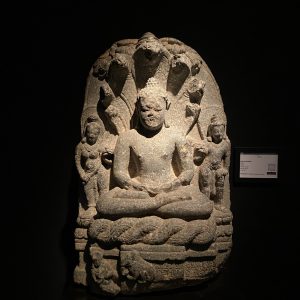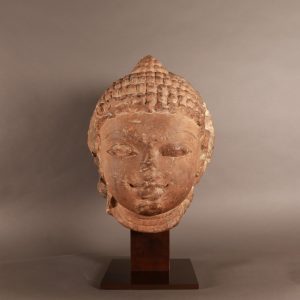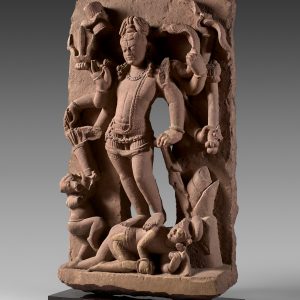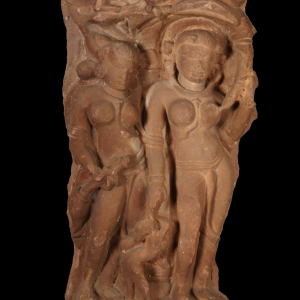The goddess Śuciṣmatī and her son Gṛhapati
25 000,00€
Black stone
Northeast India (Bihār, Bengal)
11th-12th century, Pāla period (8th-12th century)
H. 24 cm; L. 57 cm or H. 9 ½ in; L. 22 ⅜ in
Description
A most sensual image
Highly original and beautifully carved, this rare stele depicts the goddess Śuciṣmatī, nonchalantly reclining on her left flank, her head supported by one hand and having one of her feet massaged by one of her attendants. Her languid posture and generously shaped body, consistent with the Indian canon of beauty, are fascinatingly sensual. The whole figure of the goddess, dressed in a fine pleated dhotī, offers a particularly harmonious set of undulating curves, enhanced by ornaments of obvious richness. Sophisticated tiara, heavy earrings, large bracelets on the wrists, arms and ankles, voluminous necklace and elaborate belt: all these typically Indian jewels adorn the goddess in the most beautiful way. As for the details and the care taken in the carving work, one must first look at the very well preserved face, whose graphic and accentuated lines are characteristic of Pāla works, but also admire the extremely tangible modelling of the goddess’s abdomen.
Śuciṣmatī and Gṛhapati: an artwork related to the great Hindu god Śiva
This identification of the goddess Śuciṣmatī is of course possible by comparison with similar works preserved in museums (in Calcutta in particular), but above all thanks to the presence of her son, Gṛhapati, the infant who lay against the goddess’s breast and of whom only a spall remains today.
The legend from the Śiva Purāṇa tells that Śuciṣmatī and her husband, the sage Viśvānara, were unable to have a child. Seeing his wife’s desolation, Viśvānara went on a pilgrimage to Kāśī to pray to Śiva. The god appeared to him and promised him an offspring. Soon after, Śuciṣmatī gave birth to Gṛhapati. The importance of the god Śiva is also recalled by the presence, in the upper part of the stele, of his sons Gaṇeśa, the elephant-headed god, and Skanda, the eternally handsome young warrior, as well as of the liṅgaṃ, a phallic symbol of the god, linked to fertility and to his omnipotence.
A popular iconography in medieval Northeast India
This image of Śuciṣmatī, close to her child, refers to motherhood. It is an iconography that was popular in Bengal between the tenth and twelfth centuries, during the reign of the great Pāla rulers. Such stelae were most likely commissioned and worshipped by women wishing to have children (see Pal, Indian Sculpture, Los Angeles, 1998, p. 93). The female figure in the lower register, seated in front of a fire altar and offering bowls, likely represents one such female donor.
Provenance: Collection of a japanese diplomat, acquired in Bangladesh in the 1970s.

